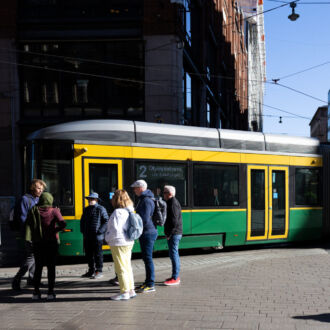When an American friend of mine moved from New York City to Helsinki, he knew what to expect. He had visited Finland often, he enjoyed Helsinki’s manageable size, and he knew that the winters can be tough. Yet there was one thing that worried him: the low level of Finnish salaries.
The annual median wage for full-time workers in Finland is only 36,000 euros (about 43,000 dollars). This might not seem low in many places in the world, but for an educated professional hailing from one of the world’s big financial centres, it means a serious pay cut. My friend was used to salaries in New York City, and while New York certainly has its share of minimum-wage workers earning much less, corporate professionals such as lawyers, financiers and sales executives usually make at least 100,000 dollars a year. Finnish salaries can’t really compete. Yet my friend from New York soon discovered that the income loss was less dire than he’d expected. The reason was simple: in Finland, he didn’t spend any money.
He laughed as he said this. Of course, he did have to spend some money. Housing in Helsinki can be absurdly expensive, and food is costly compared to many other places. But there was a deeper truth to what he was saying.
For example, in New York City the average annual cost of childcare for an infant is 16,000 dollars. That’s above-average for the US, but in more than half of American states, the cost still tops 10,000 dollars, and in Washington, DC, it’s even higher, at 22,000 dollars. In Finland, every child in the entire country is guaranteed a spot in a high-quality, public daycare centre, where children play outside most of the day supervised by expertly trained and well-educated staff. Families pay for this service on a sliding scale according to their income. The maximum amount anyone – no matter how wealthy – has to pay comes to 3,480 euros (approximately 4,100 dollars) per year.
In the US, new parents must not only pay for expensive daycare, but must also start saving for the future education of their child. Average tuition fees plus room and board at a private nonprofit four-year college in the US will come to about 45,000 dollars a year. In Finland, a university education is free of charge for all Finnish and EU citizens, and the government grants students a monthly stipend to help with living costs.
Falling in love with Nordic ideals
In the US, healthcare is one of the biggest expenses for families. In Finland, healthcare is funded through taxes, with patients paying only small contributions. Care for children and pregnant women is mostly free. Annual out-of-pocket costs are capped at 690 euros (815 dollars) per year. Once a patient reaches that limit, most care is free.
My friend was discovering that, while educated Americans may earn salaries that appear high at first glance, securing these basic services can cost an American family tens, if not hundreds, of thousands of extra dollars per year in after-tax money. In a country like Finland, such services are just like the fire department; you pay your taxes and you’re done. Finnish taxes are proportional to income, and income tax also tends to be lower than most outsiders assume. (A Finnish median wage earner can expect to pay about a quarter of their income in taxes.) As a result, even a seemingly small salary in Finland will take you far.
People around the world have fallen in love lately with a Nordic ideal that is often referred to by the Danish term hygge – spending cosy time with family and friends, and not working yourself to death in pursuit of higher salaries. [Editor’s note: Even more recently, the Finnish word sisu has been attracting renewed attention abroad.] It is often left unsaid that Nordic people can afford to enjoy their lives this way because their societies have chosen to provide some of the more complicated, expensive, and essential needs of life – daycare, education, healthcare, and the like – as universal goods. This means that people don’t have to spend their own time researching and securing such services, and everyone can receive these basic goods regardless of their income level. It also means the same services are used by the wealthy and the middle-class alike, which helps keep quality high.
Now that my friend is settled in Finland with a job and a new-born child, he considers it a great deal. It’s not about how much money you make. It’s about what that money will buy you.
Top three things that work great in Finland
|
By Anu Partanen, ThisisFINLAND Magazine 2018







